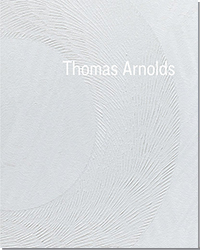Artist's Books / Special Editions
Almond, Darren: All Things Pass
Almond, Darren / Blechen, Carl: Landscapes
Brown, Glenn: And Thus We Existed
Butzer, André: Exhibitions Galerie Max Hetzler 2003–2022
Chinese Painting from No Name to Abstraction: Collection Ralf Laier
Choi, Cody: Mr. Hard Mix Master. Noblesse Hybridige
Demester, Jérémy: Fire Walk With Me
Dienst, Rolf-Gunter: Frühe Bilder und Gouachen
Dupuy-Spencer, Celeste: Fire But the Clouds Never Hung So Low Before
Ecker, Bogomir: You’re NeverAlone
Elmgreen and Dragset: After Dark
Förg, Günther: Forty Drawings 1993
Förg, Günther: Works from the Friedrichs Collection
Galerie Max Hetzler: Remember Everything
Galerie Max Hetzler: 1994–2003
Gréaud, Loris: Ladi Rogeurs Sir Loudrage Glorius Read
Grosse, Katharina: Spectrum without Traces
Hatoum, Mona (Kunstmuseum
St. Gallen)
Eric Hattan Works. Werke Œuvres 1979–2015
Hattan, Eric: Niemand ist mehr da
Herrera, Arturo: Boy and Dwarf
Hilliard, John: Accident and Design
Horn, Rebecca / Hayden Chisholm: Music for Rebecca Horn's installations
Horn, Rebecca: 10 Werke / 20 Postkarten – 10 Works / 20 Postcards
Huang Rui: Actual Space, Virtual Space
Kowski, Uwe: Paintings and Watercolors
Mikhailov, Boris: Temptation of Life
Mosebach, Martin / Rebecca Horn: Das Lamm (The Lamb)
Neto, Ernesto: From Sebastian to Olivia
Oehlen, Albert: Mirror Paintings
Oehlen, Albert: Spiegelbilder. Mirror Paintings 1982–1990
Oehlen, Albert: unverständliche braune Bilder
Oehlen, Pendleton, Pope.L, Sillman
Oehlen, Albert | Schnabel, Julian
Phillips, Richard: Early Works on Paper
Riley, Bridget: Paintings and Related Works 1983–2010
Riley, Bridget: The Stripe Paintings
Riley, Bridget: Paintings 1984–2020
Roth, Dieter & Iannone, Dorothy
True Stories: A Show Related to an Era – The Eighties
Wang, Jiajia: Elegant, Circular, Timeless
Wool, Christopher: Westtexaspsychosculpture
Zhang Wei / Wang Luyan: A Conversation with Jia Wei
 |
|
|||
Thomas Arnolds German / English
|
For his exhibition at Kunstverein Reutlingen late in 2014, Thomas Arnolds painted a series of 20 white monochromes. The paint he used was unmixed titanium white, purer and colder than even the walls of the White Cube. And yet, these were not simple monochromes, as the paintings show relief-like textures that offer lines, simple motifs, and effects reminiscent of op art. “Something staggering takes place,” writes curator Christian Malycha, who traces the development of Arnolds’ work up to the current series in his essay. “The pictorial fields turn into sites of sheer emergence: upon the same plane massive forms, most subtle textures, and structures emerge from the very same colour, appearing as indetermined particles of expression, prior to all meaning or objective attribution, in the glistening self-light of the white. The paintings reside in this abeyance, reconciling line and colour, and displaying their gradual construction while being seen. They reveal how from isolated elements at first new words, then coherent sentences and at last a complete language evolves – ever on the boundaries of austerity and kicked-over traces, of striking signals and meaningless signs. That’s the whole point. For any painter the question is how to attain one’s own language, one’s own painting, constantly new and still constantly the same. Accordingly, Arnolds both challenges and invites us: to regain the paintings as paintings again, to behold painting itself.”
WHITEOUT A year of white colour. Was it a physical experience? Your studio is a white room with white walls and floors, only the shed roof brings in natural light and now white paintings, on top of all that. There’s this meteorological phenomenon called “whiteout”, occurring mainly in Polar regions. The snowscape reflects the sunlight most diffusely so that you cannot differentiate contrasts any longer. The horizon vanishes; landscape and sky assimilate and merge. Man becomes disoriented. What is it like to paint only with white colour? Yes, precisely. It can happen at the Polar circle but as an artist you can experience it in your own studio, too, if you’re spending time with purely white colour! Alas, I’ve only been doing this for a year. Take Robert Ryman who did this for his whole life, even though his works know several nuances of white. The same is true for Malevich whose palette holds an array of white and gray values. On the contrary, my white paintings are monochrome, purely white, “titanic”. But no horror vacui? In each painting there are points of reference. Certainly, while I am painting I notice that I am constantly trying to stay focussed. No easy task as the titanium white resists all efforts of territorial confinement – within the pictorial space as in relation to real space. There have been quite some physically odd occasions. My specific manner of painting doubles the whiteout over again, its hologrammatic aspects. Once more, natural science. Colour theory, theory of perception: Usually, we get the impression of white if things reflect light to such an extent that our retinal receptors are equally and equipollently stimulated. Herein, terms like equal, equality, similarity, equivalence, simultaneity assume an important role. You’re really pushing it to the limits of perceptibility and perception. How do you get along your paintings? After all, the white demands total and concurrent percipience of you. This is actually the way I see it. One could perceive everything at once; in fact that’s what we’re doing all the time. Still, our brain aligns and threads everything in neatly successive, daisy-chained layers of meaning. A painting, however, is simultaneity. Upon the plane, I mould particular, textural or structural nuances; create grids, patterns, and grates. Thus, planar differentiations take place and facilitate some orientation, at least at a micro-level... After a year full of white colour you must be yearning for other colours. Which ones? Very good question! I don’t know. Not yet. After all, I am no post-minimal artist painting white paintings for the rest of his life for painting’s sake. That remains to be seen.
... In collaboration with Kunstverein Reutlingen
|